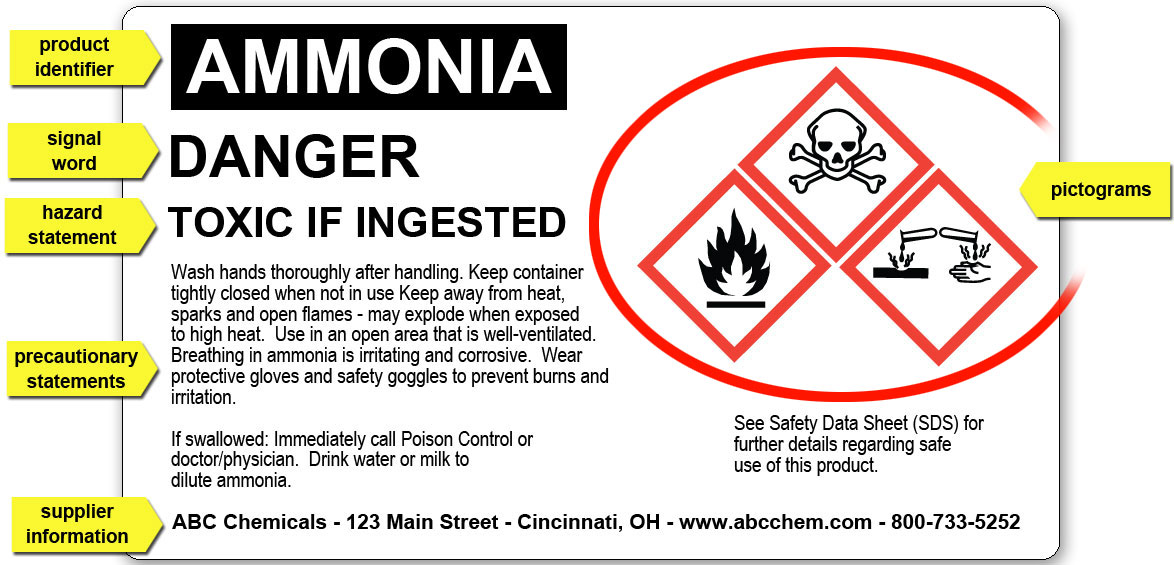hazard pictograms
Hazard pictograms or warning symbols are recognisable symbols designed to warn about hazardous or dangerous materials, locations, or objects, including electric currents, poisons, and radioactivity. The use of Hazard pictograms is often regulated by law and directed by standards organisations.
Globally Harmonized System (GHS)
What Are Hazard pictograms?
Hazard pictograms form part of the international Globally Harmonized System of Classification and Labelling of Chemicals (GHS).
Two sets of pictograms are included within the GHS:
1. For the labelling of containers and for workplace hazard warnings
2. For use during the transport of dangerous goods.
Either one or the other is chosen, depending on the target audience, but the two are not used together.

Physical hazards pictograms
![]()
GHS01: Explosive
- Unstable explosives
- Explosives, divisions 1.1, 1.2, 1.3, 1.4, 1.5, 1.6
- Self-reactive substances & mixtures, types A, B
- Organic peroxides, types A, B
![]()
GHS02: Flammable
- Flammable gases, category 1
- Flammable aerosols, categories 1, 2
- Flammable liquids, categories 1, 2, 3, 4
- Flammable solids, categories 1, 2
- Self-reactive substances and mixtures, types B, C, D, E, F
- Pyrophoric liquids, category 1
- Pyrophoric solids, category 1
- Combustible solids, category 3
- Combustible liquids, category 3
- Self-heating substances and mixtures, categories 1, 2
- Substances and mixtures, which in contact with water, emit flammable gases, categories 1, 2, 3
- Organic peroxides, types B, C, D, E, F
![]()
GHS03:Oxidizing
- Oxidizing gases, category 1
- Oxidizing liquids, categories 1, 2, 3
- Oxidizing solids, categories 1, 2, 3
![]()
GHS04: Compressed Gas
- Compressed gases
- Liquefied gases
- Refrigerated liquefied gases
- Dissolved gases
![]()
GHS05: Corrosion
- Corrosive to metals, category 1
- Strong acids/bases (nitric acid, sodium hydroxide), calcium oxide, anhydrous zinc chloride can be corrosive
Health hazards pictograms
![]()
GHS06: Toxic
- Acute toxicity (oral, dermal, inhalation), categories 1, 2, 3
![]()
GHS07: Harmful
- Acute toxicity (oral, dermal, inhalation), category 4
- Skin irritation, categories 2, 3
- Eye irritation, category 2A
- Skin sensitization, category 1
- Specific target organ toxicity following single exposure, category 3
- Respiratory tract irritation
- Narcotic effects
![]()
GHS08: Health hazard
- Respiratory sensitization, category 1
- Germ cell mutagenicity, categories 1A, 1B, 2
- Carcinogenicity, categories 1A, 1B, 2
- Reproductive toxicity, categories 1A, 1B, 2
- Specific target organ toxicity following single exposure, categories 1, 2
- Specific target organ toxicity following repeated exposure, categories 1, 2
- Aspiration hazard, categories 1, 2
Physical and health hazard pictograms
![]()
GHS05: Corrosion
- Corrosive to metals, category 1
- Strong acids/bases (nitric acid, sodium hydroxide), calcium oxide, anhydrous zinc chloride can be corrosive
Environmental hazards pictograms
![]()
GHS09: Environmental hazard
- Acute hazards to the aquatic environment, category 1
- Chronic hazards to the aquatic environment, categories 1, 2
- Environmental toxicity, categories 1, 2
